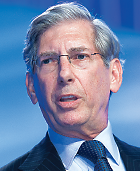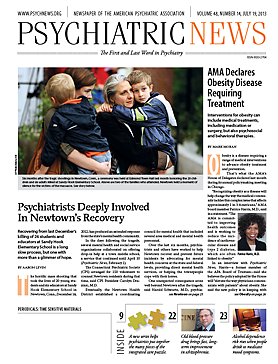The integrity of our profession and the science of psychiatry are being questioned—again by articles in the media. Two recent missives, which I found particularly disturbing, are by the noted columnist David Brooks ("Heroes of Uncertainty," New York Times, May 28) who calls psychiatry a “semi-science,” and by Leonard Sax, a British psychologist (Wall Street Journal, June 26), who accused DSM-5 of having “broadened the definition of mental illness to absurdity.” Although the most recent media criticisms have been focused on the process and finished product of DSM-5, such invective is really nothing new. But it may be time to respond in a new way.
I recently wrote an article for the
Scientific American blog (
http://blogs.scientificamerican.com/mind-guest-blog/2013/05/20/dsm-5-caught-between-mental-illness-stigma-and-anti-psychiatry-prejudice/) that explores how stigma and antipsychiatry sentiments fuel prejudice against our field and our patients. But I think it’s also important to note how the unwillingness of the public and pundits to accept psychiatry as a scientific discipline and full-fledged medical specialty perpetuates the false dualism of the mind and the brain—attempting to transport psychiatry back to the Cartesian philosophy of the 17th century. It also undermines the progress that has been made to deconstruct the almost unfathomable complexity of the brain into its constituent neurobiological mechanisms that mediate emotion, perception, and cognition.
The intellectual thrust of psychiatry, throughout its entire history, has been to understand the maladies of the mind in terms of the brain. Prior to the 18th century, mental illness was considered a spiritual or moral affliction. When enlightenment thinking inspired the view of mental illnesses as medical conditions, psychiatrists proceeded to examine the brain but found no visible pathology. Even Freud, a neurologist, appreciated the need to invoke the brain to understand behavior and psychopathology. His “Project for a Scientific Psychology” anticipated a neurobiological explanation for mental processes and unconscious psychic phenomena. However, the science of his day was inadequate for the audacity of his vision, and he was required to resort to clinical and metaphysical conceptions of mental mechanisms. It has only been in the last half century that we have been able to even envision the possibility of achieving Freud's dream.
Many critics take issue with the fact that our disorders do not manifest in lesions or biologic abnormalities. But numerous nonpsychiatric conditions are clinically diagnosed without observable pathology or laboratory tests (such as migraine headaches, irritable bowel syndrome, etc.). Interestingly, our critics do not cast aspersions on PTSD, which also has no physical diagnostic stigmata—because that would be politically incorrect.
The maturation of psychiatry has been limited largely by technology. Just as Galileo could not confirm heliocentrism until the telescope was developed, and Pasteur required the light microscope to identify microorganisms, psychiatry could not begin to gain traction on the functions of the brain until the emergence of psychopharmacology, modern neuroimaging methods, and molecular genetics. These technologies, combined with rigorous scientific methodology, have enabled psychiatrists, psychologists, and neuroscientists to begin to integrate the mind and the brain.
The dependence of medical progress on enabling technologies was made very clear recently with the announcement of President Obama’s Brain Activity Map Project. The sheer magnitude and complexity of the brain, with its 100 billion cells, 30 trillion synaptic connections, myriad interwoven neural circuits, and vast mosaic of gene expression, requires a great leap forward in technology and instrumentation to help us further elucidate its relationship to mental functions and behavior. This big science project, along with the Human Connectome Project, is intended to address this need, just as the Human Genome Project did previously.
Our understanding of the relationship between the brain and mental disorders may have been slow to develop, but recent advances in research have shown us that they are biological in nature and caused by genetics and environmental factors. Patients are not responsible for their mental illness, and psychiatrists are doing their best to recognize and treat mental disorders and help patients as best we can within the limits of our knowledge. For this noble mission, we have nothing to be defensive about. ■

